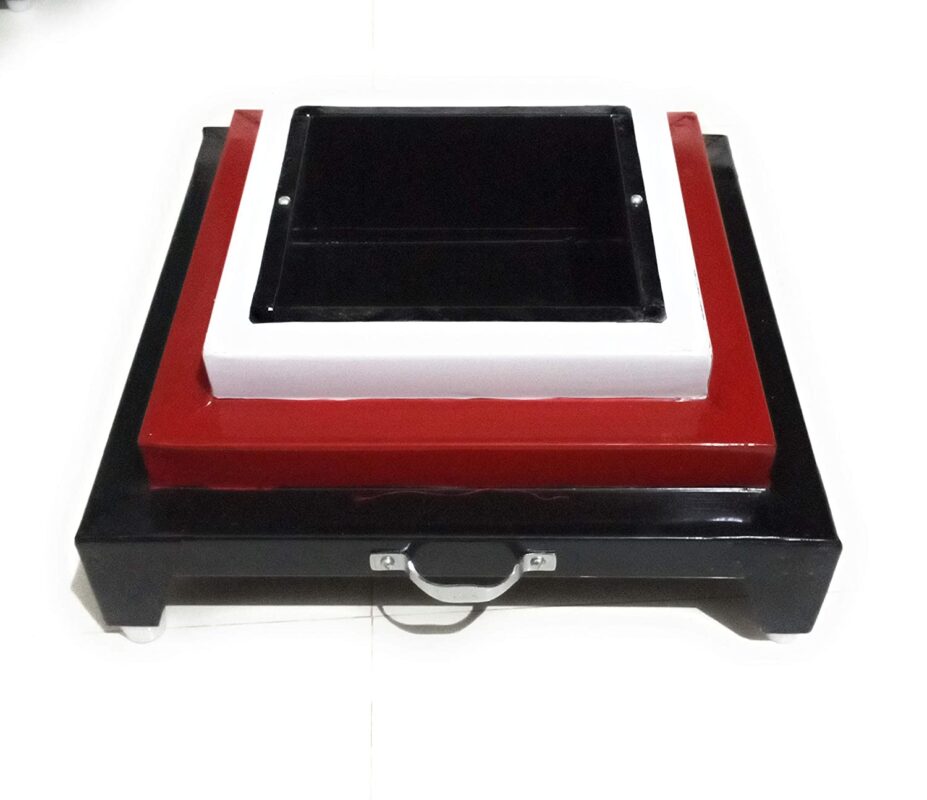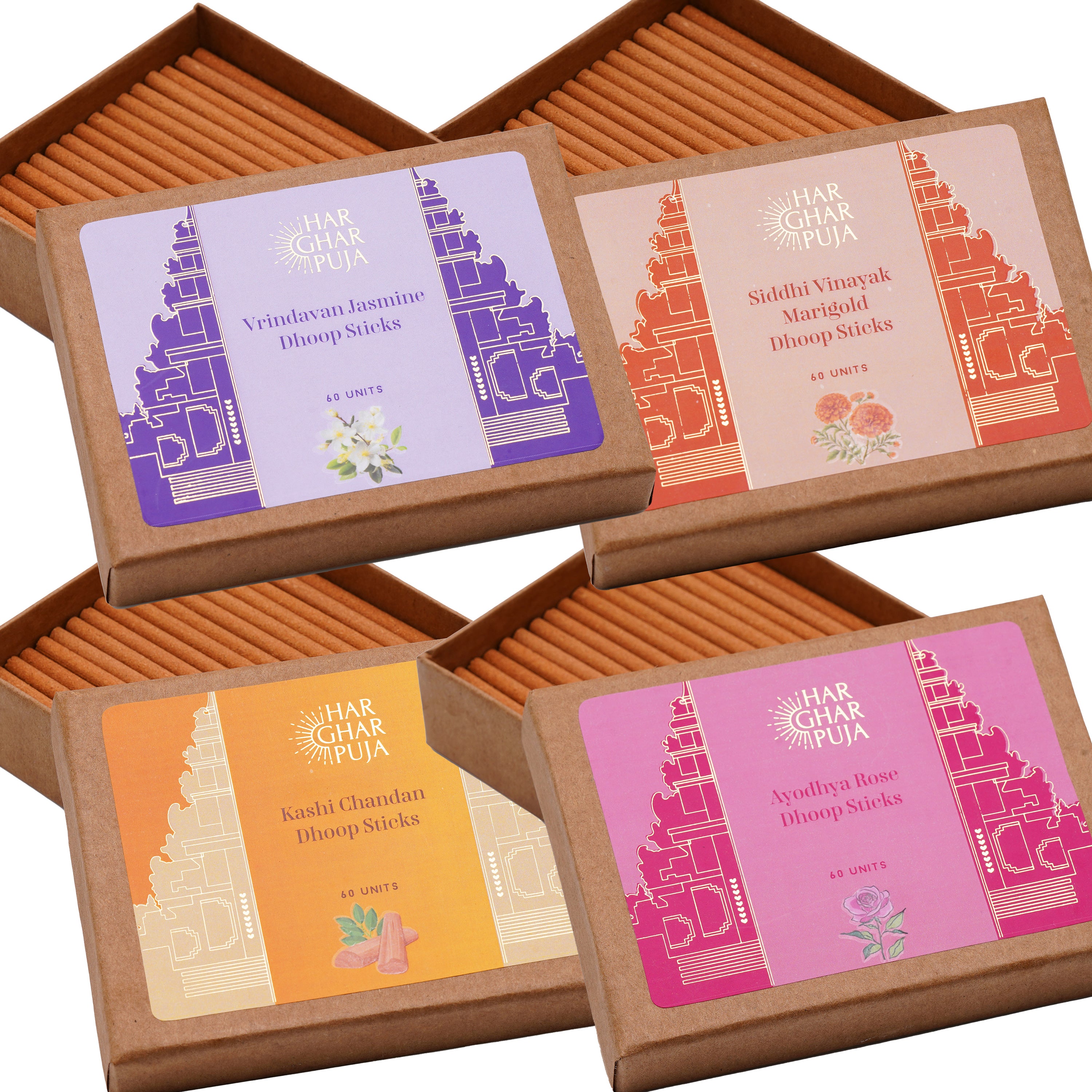Havan (or Yagna) holds a special significance in Indian Sanatan culture, being a core ritual performed from birth to death in a traditional manner. The preparation and execution of Havan are governed by specific rules, tailored to the wishes of the practitioner.
What is a Havan Kund?
A Havan Kund is the sacred fire altar where the Havan fire is lit, and offerings such as samidha and Havan samagri are made. Constructing a Havan Kund is a meticulous process requiring precise adherence to Vedic principles. The process involves careful selection of land and construction of the Havan Kund (fire altar) based on Vedic mathematics, trigonometry, astrology, and strict Vedic traditions.
For those unfamiliar with Havan, this article will explain the Vedic rules for constructing a Havan Kund, its various types, and the benefits associated with each type.
How should the land for Havan be?
Selecting the best land for a Havan is crucial for its success. The most auspicious locations are near rivers, temples, confluences, gardens, or mountain peaks, particularly in the northeast corner. Conversely, land that is cracked, contains hair, or has a snake’s nest is deemed inauspicious for setting up a Havan Kund.
In this article, we will delve deeper into the intricacies of Havan Kund construction and the benefits of performing Havan based on the type of Kund used. This knowledge will aid those seeking to understand and perform Havans correctly, ensuring the desired spiritual and material benefits.
Different Shapes of Yagya Kund and Their Purposes
The shape of a Yagya Kund (sacrificial fire altar) is determined by the purpose of the Yagya and the number of offerings to be made. The construction process begins with drawing a circle, with its circumference based on the number of offerings, followed by the creation of the specific Yagya Kund shape.
In texts like the ‘Bhavishya Purana’ and ‘Kund Mandap Siddhi,’ ten different shapes of Yagya Kunds are described: circular, semicircular, triangular, square, pentagonal, hexagonal, heptagonal, octagonal, yoni-shaped, and lotus-shaped. Each shape serves a specific spiritual or material purpose, and performing the Yagna correctly in these shapes is believed to help achieve the desired goals.

These diverse forms are meticulously chosen to align with the intended outcomes of the rituals, ensuring that the sacred fire ceremonies bring about the desired blessings and fulfill the spiritual or material aspirations of the participants.
Size of Yagya Kund Based on Varna
In the Vedic period, the caste or varna system was based on deeds rather than birth. Individuals could adopt roles and responsibilities associated with different varnas. Each varna required distinct spiritual and physical energies, leading to the recommendation of different Yagya Kund sizes for each class. This underscores the integral role of Yagya in daily life, transcending class distinctions.
According to the text ‘Sharda Tilak’, the appropriate Yagya Kund sizes for different categories are:
- Brahmins: Square-shaped Kund (Chaturbhuj Kund)
- Kshatriyas: Circular Kund (Vircular Kund)
- Vaishyas: Half-moon shaped Kund (Ardhchandra Kund)
- Shudras: Triangle-shaped Kund (Trikona Kund)
- Women: Yoni-shaped Kund
These guidelines reflect the tailored spiritual practices for each group, ensuring the Yagya rituals cater to their specific spiritual and physical needs.
Determining the Size of the Havan Kund
The size of the Havan Kund is crucial and depends on the total number of ahutis (offerings) to be made. This ensures the Kund is neither too small nor excessively large, maintaining respect for Agni, considered sacred and divine. Accurate Vedic mathematics is used to calculate the appropriate size, ensuring the Kund can accommodate the offerings without overflow.
According to the ancient text ‘Sharada Tilaka,’ the required dimensions for the Havan Kund based on the number of oblations are as follows:
- For 10,000 ahutis: Bhu Hastam Kund (1 hand long).
- For 100,000 ahutis: Dyu Hastam Kund (2 hands long).
- For 1,000,000 ahutis: Chatur Hastam Kund (4 hands long).
- For more than 1,000,000 ahutis: Ashta Hastam Kund (8 hands long).
Here, ‘hand’ is used as a unit of length, ensuring the Kund is appropriately sized to hold the offerings. At the end of the Yagya, the Havan Kund should ideally be filled to two-thirds of its capacity.
Mathematical Units for Constructing a Yagya Kund
In the Vedic period, special mathematical units were used for constructing Yagya Kunds, enabling precise and intricate designs. These units are:
- 8 Likshha = 1 Yuka: 0.03125 cm = 0.01230316 inches
- 8 Yuka = 1 Yava: 0.25 cm = 0.09842525 inches
- 8 Yava = 1 Angul (approx. width of one finger): 2 cm = 0.787402 inches
- 24 Angul = 1 Hasta: 48 cm = 18.897648 inches
- 21 Angul = 1 Ratni: 42 cm = 16.535442 inches
- 22 Angul = 1 Aratni: 44 cm = 17.322844 inches
‘Hasta’ and ‘Angul’ are primary units, with 1 Hasta equaling 24 Angul.
Notably, the width of the Yajman’s thumb (Angul) is used to calculate the Kund’s dimensions, with research indicating slight variations in the exact length of an Angul. This method ensures the Kund’s size is tailored to the Yajman’s needs, allowing precise calculations for constructing the Yagya Kund and determining the total quantity of offerings.
| Sl No | Name of the shape of the Yagna Kund | Diameter of circular (Angul.Yav.Yuka) = cm | Multiply the square of the diameter of the circle (D2) by the divisor given in the verse | Divide the product by 10000 | Area of the furrow |
| 1. | Circular Kund (Virkuṣa Kund) | (27.0.5) = 54.155 सेमी | 7854* D2 | 5756982/10000 | 575.7 |
| 2. | Padma Kund | (27.0.5) = 54.155 सेमी | 7854* D2 | 5756982/10000 | 575.7 |
| 3. | Crescent Kund | 38.2.3 = 74.593 cm | 2927* D2 | 5759927.2/10000 | 575.9 |
| 4. | Yoni Kund | 30.2.0 = 60.5 cm | 6293.4* D2 | 5760000/10000 | 576 |
| 5. | Triangular Kund | 42.1.0 = 84.25 cm | 3247.4* D2 | 5760000/10000 | 576 |
| 6. | Four Sided Kund | 33.7.4 = 67.875 cm | 5000* D2 | 5760000/10000 | 576 |
| 7. | Five Sided Kund | 31.1.0 = 62.25 cm | 5944/2* D2 | 5760000/10000 | 576 |
| 8. | Six Sided Kund | 29.6.0 = 59.5 cm | 6495* D2 | 5760000/10000 | 575.9 |
| 9. | Seven Sided Kund | 29.0.0 = 58 cm | 6841* D2 | 5759266.7/10000 | 576 |
| 10. | Eight Sided Kund | 28.4.0 = 57 cm | 7071* D2 | 5759329.4/10000 | 575.9 |
Structure of Havan Kund
The Havan Kund is structured in three distinct steps, known as ‘Mekhla’, each representing different divine associations and colors:
- First Step (White): This step symbolizes purity and is associated with Lord Vishnu.
- Second Step (Red): This step represents energy and creativity and is linked to Brahma.
- Third Step (Black): This step signifies transformation and dissolution, embodying Lord Shiva.
The color differentiation and deity associations reflect the profound spiritual significance and careful design of the Havan Kund.
Different Havan kunds needs to be in specific orientation as per shastras
Panch Kundiya Yagya Layout:
- Acharya Kund: Central position.
- Chatursra Kund: East.
- Ardhachandra Kund: South.
- Circular Kund: West.
- Padma Kund: North.
Nav Kundiya Yagya Layout:
- Acharya Kund: Central position.
- Chatursra Kund: East.
- Yoni Kund: Agni angle (Southeast).
- Ardhachandra Kund: South.
- Trikon Kund: Southwest.
- Circular Kund: West.
- Shadasra (Hexagonal) Kund: Northwest.
- Padma Kund: North.
- Ashtakon (Octagonal) Kund: Northeast
The design and construction of yajna kunds require precise scientific and mathematical knowledge. Ancient Indian sages, who were adept scientists, developed detailed mathematical models for constructing these sacred structures. They formulated Vedic principles that ensure the total volume and surface area of the kund remain consistent, regardless of size. Each shape of a Yajna Kund is crafted to generate specific energies, serving different purposes. Although the energy dynamics of these shapes exceed modern scientific understanding, this ancient knowledge invites thorough investigation and validation through contemporary methods







